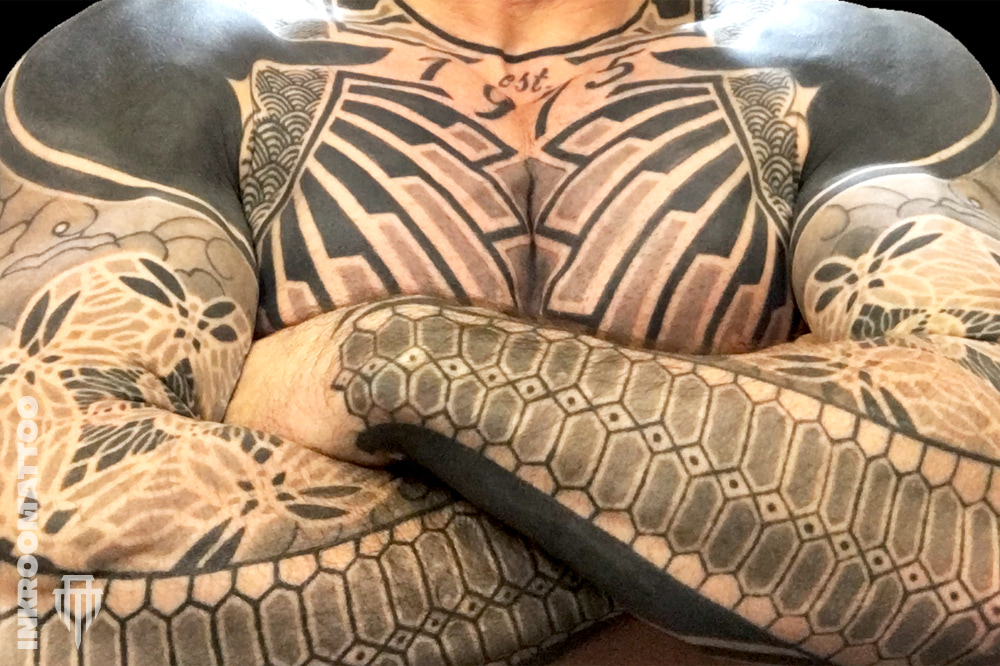Tattooing dates back thousands of years, and the very first ink ever used was black—usually made from charcoal, burnt wood, or bone. Ancient tribes used it as a symbol of identity, authority, and loyalty—and in some cultures, they still do.
The meaning of blackwork tattoos was originally very different from how we see them today. The style traces back to ancient tribal tattooing, particularly Polynesian body art, known for its abstract, flowing shapes.
These tattoos would follow the natural contours of the body and were deeply personal. Tattoo artists used tribal symbolism and iconography to illustrate a person’s life story or legends. In many Polynesian cultures, tattoos served as hierarchical markers within the tribe. They were seen as sacred and protective. Tattoo artists were considered almost like shamans or priests—holders of divine knowledge and ritual.
These ancient traditions have significantly influenced modern blackwork tattoos. Many contemporary artists working in tribal styles still draw inspiration from these age-old aesthetics.
While tribal tattooing makes up the foundation of the blackwork style, in recent years, the term has broadened to include various other techniques. Dark art, illustrative and graphic designs, etching- or engraving-inspired tattoos, and even lettering can all fall under the blackwork category—as long as they are done entirely in black ink.
Blackwork can also include geometric patterns, often with esoteric or sacred geometry elements, and ornamental designs inspired by henna patterns. The term “blackwork” has been used beyond tribal tattooing to describe multiple forms of art.
There are now many styles that fall under the blackwork umbrella—especially because, these days, any artist who works solely with black ink is often considered a blackwork artist. The term has become quite broad.
This style offers nearly limitless possibilities. With the rise of social media in recent years, it’s easy to assume that blackwork is a modern trend—but in truth, it has ancient roots.
Here are some of the key substyles and techniques that fall under blackwork today:
– blackwork-dotwork
Composed entirely of dots, which from a distance appear solid, but reveal a dotted texture up close.
The density of dots creates the design and shading, allowing even 3D effects. It’s used in realistic, geometric, and mandala designs.
– whip shading
Now considered a technical method, whip shading was once seen as a mistake made by beginners. It results from quick hand movements and uneven shading—producing a scratchy, textured fill that has become a deliberate stylistic choice.
– linework
Encompasses anything made purely of lines—ranging from the simplest designs to complex geometric structures. These tattoos have no fill or shading, just clean outlines.
– fine line tattoo
A subcategory of linework, fine line tattoos use extremely thin lines, without any shading or color. However, they don’t always heal evenly on all skin types. The body’s lymphatic system may absorb the pigment more quickly, which can result in faded or patchy areas over time.
– geometrikus
Tattoos based on geometric shapes and patterns. These can be combined with other styles (e.g., realism) or stand alone beautifully thanks to their symmetry and visual impact.


